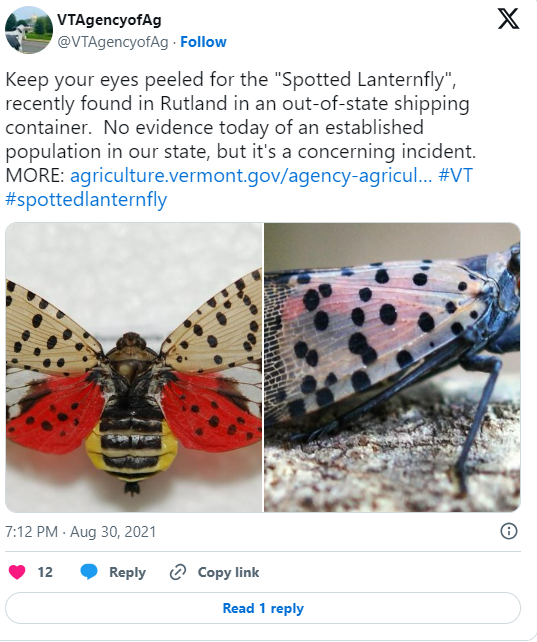A silent killer is lurking in the eastern United States, threatening to destroy everything in its path. The spotted lanternfly, a highly invasive bug native to China, has been wreaking havoc on the environment, and it’s up to you to stop it.

These seemingly harmless creatures are actually a menace, feeding on plants and trees, and killing them over time. They also produce a sticky substance called honeydew, which leads to the growth of sooty mold and further damages plants. The economic and ecological impact of these bugs is staggering, causing significant damage to fruit crops and hardwoods.

So, what do these bugs look like? In the late summer to fall, they lay eggs in masses covered in a waxy, mud-like coating. The nymphs are black with white spots, turning reddish with black borders and white dots as they grow older. Adult lanternflies are about an inch long, with grayish forewings marked with black spots, and red underwings with black spots bordered with white.
The feeding habits of these bugs weaken plants, leading to their death, especially in large numbers. The ecological impact is just as devastating, disrupting local ecosystems and affecting the animals that depend on the plants they feed on.

So, what can you do to stop these pests? Controlling and killing spotted lanternflies requires a combination of methods. Scrape off egg masses from surfaces, and crush nymphs and adults when spotted. Wear gloves to avoid direct contact, and report sightings to local authorities to aid in broader control efforts.

If you’re in an area under quarantine, follow all regulations to prevent spreading these bugs to other areas. Remember, killing spotted lanternflies is not just a necessity; it’s a responsibility to protect our environment. Share this story with others, and let’s join forces to eradicate these deadly creatures.


